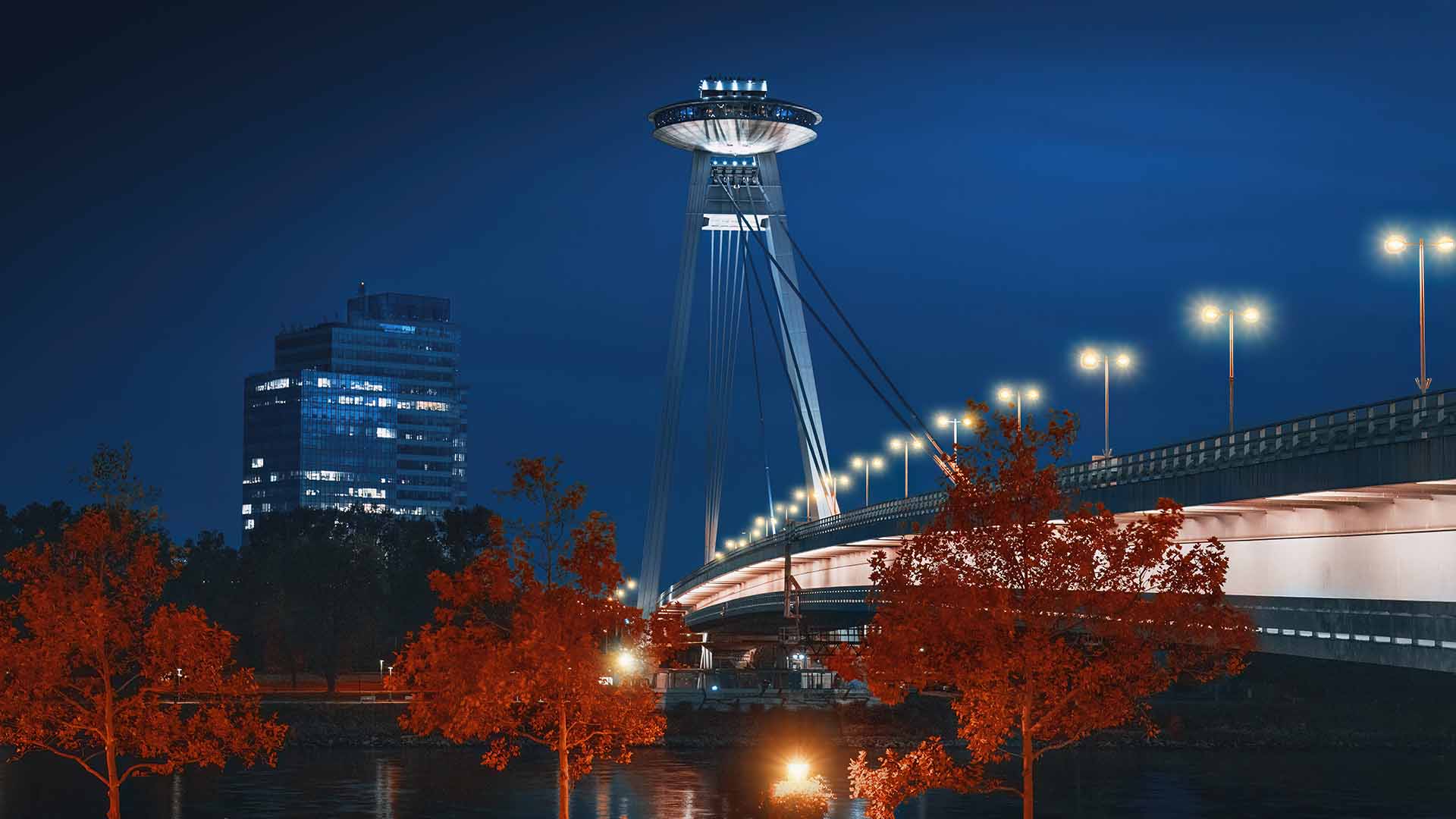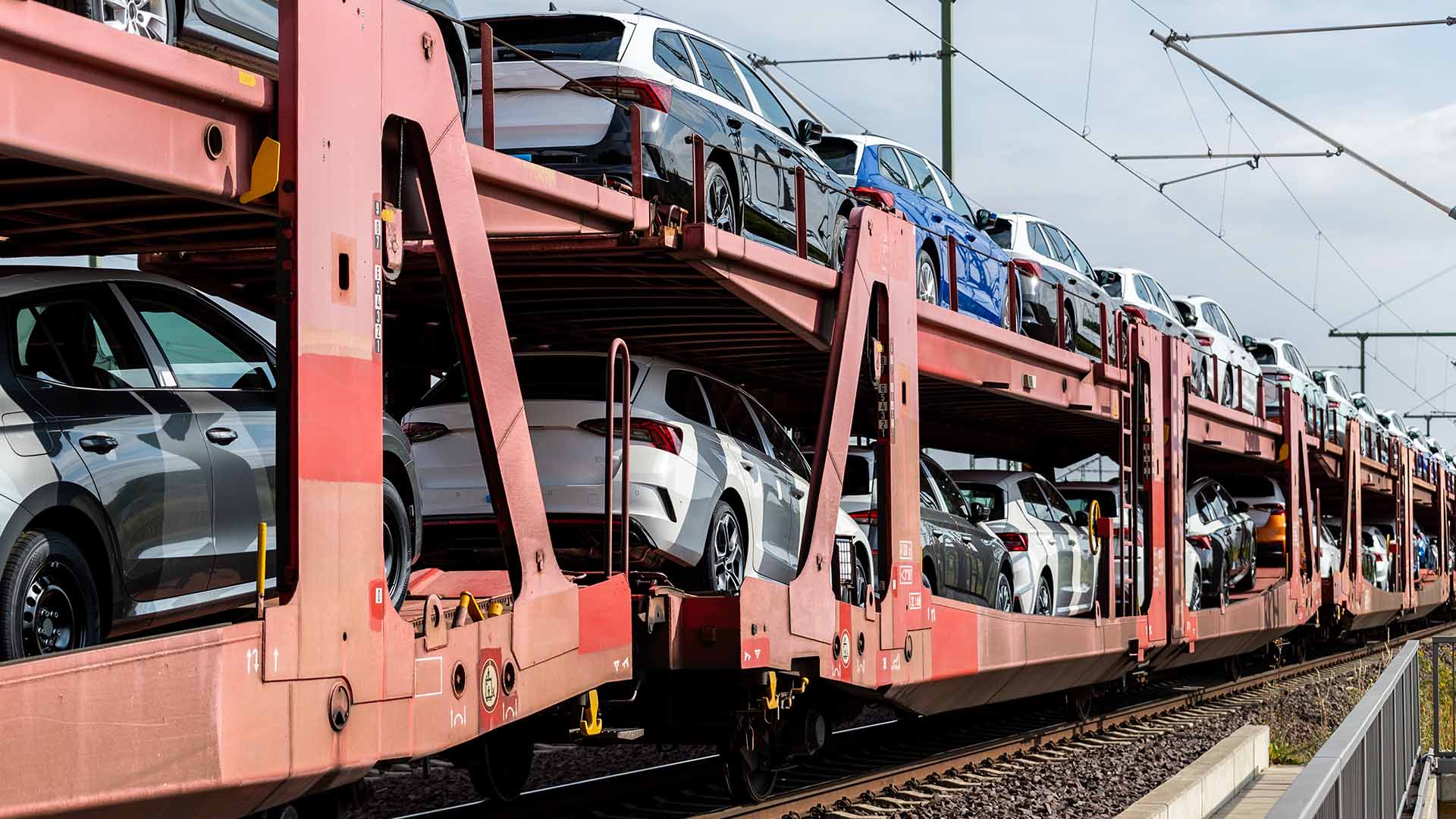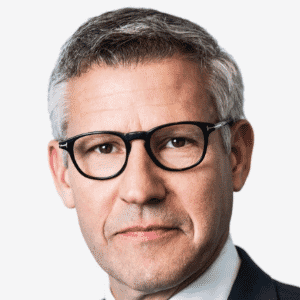 Credit: Lazy_Bear | envato
Credit: Lazy_Bear | envatoPoland and Beyond: Prologis on CEE Real Estate
Insights on the Region’s Logistics Markets from Prologis Europe President Ben Bannatyne
May 18, 2023Real Estate
Written by Rory Hickman
The industry leader’s activity in CEE currently extends to Poland, Czechia, Slovakia, and Hungary, with the Polish market strongly considered to serve as both the linchpin and a barometer for the activity in the region - although as Bannatyne is quick to point out, “it's also the one that will be affected first by any global changes in demand or in the capital markets.”
CEE’s real estate markets have undergone significant changes in recent years, with Poland emerging as the biggest market and driving much of the growth. With the strong performance of industrial warehouse logistics, Bannatyne believes that this sector “will remain a major driving force for the real estate industry in Central Europe.”
With the growth of ecommerce, the need for faster and more efficient delivery services - in turn requiring a well-functioning logistics infrastructure - has been made explicitly clear. Developers and investors are increasingly focusing on the development of modern, high-quality logistics facilities including warehouses, distribution centres, and fulfilment centres, creating significant investment opportunities in the region’s logistics market.
While the pace of ecommerce growth in Central Europe may be slowing down, Bannatyne explains that its impact on the real estate industry remains significant, and that it could continue to benefit from high consumer demand as well as a population with an increasing level of disposable income.
Czechia is currently one of the strongest and most robust markets in the region. In fact, rental prices in the country - especially in Prague - at times reach higher levels than the average rents in Western Europe, including Germany.
Prague, with a metropolitan area population of about 1.3 million, accounts for over one-fifth of the Czech GDP and boasts a GDP per capita as much as 187% of the EU average, making it an important consumer economy.
Making up about 80 percent of the city's employment, Prague's economy is heavily centred around services, including tourism, banking, and information technology. Demand for distribution and logistics facilities is increasing as a result, particularly to account for the growth of e-commerce and rising volumes of trade.
However, finding new opportunities and land in Czechia has become increasingly difficult due to the tight and competitive market, which has itself fed a notable level of rental growth. “We will continue to work on longer term land opportunities and also acquisitions of standing income producing assets at the right price brought to Slovakia,” says Bannatyne.

Despite Slovakia's small size, its logistics and industrial sectors are strong, and Prologis is well-positioned to take advantage of this growth. Although the market leader currently operates only one park in Slovakia, it is actually the largest distribution centre in the Prologis portfolio. Prologis Park Bratislava DC11 is strategically located on the Danube river and has easy access to several water, road, freight, and air connections.
Bratislava - Slovakia's capital and wealthiest region - has become a hub for foreign direct investment in the logistics and industrial sectors. This investment has largely been driven by the auto industry. Manufacturers including VW, PSA, Kia and Jaguar Land Rover all operate factories in Slovakia, with 44% of the country’s total industrial production and 40% of its exports generated by the sector in 2019.

With a strong transportation infrastructure, a skilled workforce, and a strategic location, Budapest is Hungary's primary centre for logistics and distribution. The industrial real estate sector in Budapest is dominated by demand from government, tourism, services, software, pharmaceuticals, and the automotive industry, with many European automakers and auto parts manufacturers operating facilities in the country.
While Hungary's political landscape can be unpredictable, demand for logistics real estate in Budapest remains strong. Prologis is committed to capitalising on the country's growing logistics and distribution industry, recently completing the first phase of construction on over 114,000 square metres of new space in its Budapest-Sziget II complex, with the third phase expected to begin in 2024. The total value of the project is approximately €130 million.
According to Bannatyne, the country has the most significant and enduring market in the region for Prologis, but it presents something of a unique case. Having been dominated by one or two developers focused on trade rather than long-term institutional owners, Poland has “a very different dynamic from any other market in Europe, in fact maybe even any other market globally.”

For many years, Poland has had the lowest rental levels of any market in which Prologis is active, as well as being seen as the most competitive. This competitiveness is aided by the large reserve of land available for development, resulting in relatively low barriers to entry compared to other markets.
Lower production costs, strong infrastructure links, and the availability of skilled labour are among the other factors that enhance the appeal of the Polish logistics market. These benefits are compounded by the gateway provided to the rest of Europe through the country’s border with Germany.
Bannatyne shared that Warsaw, Poznan, and Silesia have been some of the markets that have proven their ability to weather any storm and continue to be popular centres for investment due to their strong rental markets and thriving economies. Meanwhile, suburban and rural locations are gaining interest due to changes in work and lifestyle patterns post-COVID.
While the Polish market has taken a long time to mature, it has now reached a stage at which it is considered to be institutionally acceptable, and the prospect of securing rental growth makes it a more interesting market for many investors.
The Polish real estate market has experienced significant shifts since mid-2022, with rising construction costs and a growing focus on quality, sustainability, and location becoming essential considerations for developers and investors. The shift towards sustainability is driven by the need to meet net-zero emissions goals and an increased awareness of the environmental impact of construction.
The rapid increase in construction prices has probably had the biggest impact on Poland’s market, with the relatively sudden change adding additional hurdles for developers to undertake new projects. Bannatyne says that the prices are beginning to come back down, “but it's still a lot more expensive than it was, and permitting for land has become more challenging.”
While Prologis had previously found it possible to “identify a site, purchase it, get permits, and have a building standing there literally within 12 months,” the executive explains that the timeline for obtaining permits has recently become significantly longer.
Despite the challenges, the Polish real estate market remains attractive to both developers and investors. Developers are adapting to the changing market by focusing on sustainable and energy-efficient projects, and seeking out more strategic locations for their developments. While the market may be slower than in previous years, it remains stable and continues to offer opportunities for savvy investors.
Sustainability has become a vital issue in the Central and Eastern European (CEE) region, with an increasing number of stakeholders prioritising sustainable development practices. Investors, bankers, and customers alike are showing a heightened interest in sustainable building practices.
The region has faced unique challenges in transitioning to sustainable development due to its history of heavy industry and a high dependence on fossil fuels. However, efforts to promote sustainable practices have gained momentum in recent years, with several CEE countries setting ambitious targets for reducing carbon emissions and increasing renewable energy use.
However, Bannatyne points out that regulations and bureaucracy are hampering the efforts of developers and investors to create green buildings. “Particularly in Poland, but actually right across Central Europe, in terms of producing power, that makes you a utility provider - which requires a licence to act as a utility provider” he says, adding “It's much more complicated really.”
Prologis has caught up quickly with the demand for sustainable building practices. Much of their stock is modern, making it easier to integrate green features. Although construction and development prices will increase significantly as a result of including green technologies, the company is committed to its goal of reaching carbon neutrality in its developments by 2025.

New builds are relatively straightforward, with green features being incorporated from the start. New internal standards for specifications will have roof structures designed to accommodate solar panels, heat pumps built into pipework and ducting systems, and other technological advances to help reduce the carbon footprint of this vital infrastructure. It may cost more in the short term, but it invariably adds value both now and well into the future.
Bannatyne states that redevelopment, on the other hand, is significantly more complicated and expensive. Adding solar to roofing is difficult if it wasn't designed to accommodate the structural requirements of the panels, and older constructions may not be compatible with certain standards that are being introduced.
Developers and investors have demonstrated a strong willingness to make an effort for green buildings, but their efforts are currently being hampered by regulations and red tape. Governments and regulatory agencies in the region “need to sort out some of the bureaucracy and legal framework if they want to fast track to a net zero environment,” says Bannatyne.
In line with the company’s commitment to achieving net zero emissions across its value chain by 2040, Prologis has invested heavily in energy-related lines of business - including EV charging and onsite solar - as additional value-add services for customers through its Prologis Essentials platform. This includes a line of energy options such as solar power, smart lighting, and energy storage solutions.
The push towards electric vehicles is another aspect demanding scrutiny, as the region will require extensive development of its infrastructure to make it viable, especially considering the ambitious goals for electric delivery vehicles in CEE.

Despite these factors, the increasing demand for modern, high-quality logistics facilities including warehouses, distribution centres, and fulfilment centres mean that the logistics and industrial sectors in Poland, Czechia, Slovakia, and Hungary still present reasons to be optimistic and provide significant investment opportunities.
Ben Bannatyne recently shared his extensive experience in the real estate markets of Central and Eastern Europe at CEE GRI 2023 during his opening fireside chat - Is CEE still Europe's Gateway for Growth? A full report on all of the discussions held at the two day event will be available soon.
Ahead of CEE GRI 2023 we sat down with Ben Bannatyne, president of Prologis Europe, to discuss the current situation in the region and get his insights into what we can expect to see going forward. His extensive experience and knowledge of the CEE markets make him an expert in navigating the challenges and opportunities presented by these unique markets.
The executive has been making waves in the Central and Eastern European real estate market for over two decades, having started working with Poland in 1997 during his 11 years with JLL. He subsequently spent seven of his 14+ years so far at Prologis in charge of the company’s operations in the region until taking up the reins for the entirety of Europe.
The industry leader’s activity in CEE currently extends to Poland, Czechia, Slovakia, and Hungary, with the Polish market strongly considered to serve as both the linchpin and a barometer for the activity in the region - although as Bannatyne is quick to point out, “it's also the one that will be affected first by any global changes in demand or in the capital markets.”
All Eyes on CEE

“Logistics will remain a major driving force for the real estate industry in Central Europe,” says Ben Bannatyne | (Photo: Bluesandisland | Envato)
The war in Ukraine and the interrelated energy crisis have brought renewed attention to Central and Eastern Europe, and both situations continue to have a profound impact on the region - bringing new challenges but also a number of opportunities.CEE’s real estate markets have undergone significant changes in recent years, with Poland emerging as the biggest market and driving much of the growth. With the strong performance of industrial warehouse logistics, Bannatyne believes that this sector “will remain a major driving force for the real estate industry in Central Europe.”
With the growth of ecommerce, the need for faster and more efficient delivery services - in turn requiring a well-functioning logistics infrastructure - has been made explicitly clear. Developers and investors are increasingly focusing on the development of modern, high-quality logistics facilities including warehouses, distribution centres, and fulfilment centres, creating significant investment opportunities in the region’s logistics market.
While the pace of ecommerce growth in Central Europe may be slowing down, Bannatyne explains that its impact on the real estate industry remains significant, and that it could continue to benefit from high consumer demand as well as a population with an increasing level of disposable income.
Czechia, Slovakia, and Hungary

Prague, with a metropolitan area population of about 1.3 million, accounts for over one-fifth of the Czech GDP | (Photo: korneevamaha | envato)
Czechia is currently one of the strongest and most robust markets in the region. In fact, rental prices in the country - especially in Prague - at times reach higher levels than the average rents in Western Europe, including Germany.
Prague, with a metropolitan area population of about 1.3 million, accounts for over one-fifth of the Czech GDP and boasts a GDP per capita as much as 187% of the EU average, making it an important consumer economy.
Making up about 80 percent of the city's employment, Prague's economy is heavily centred around services, including tourism, banking, and information technology. Demand for distribution and logistics facilities is increasing as a result, particularly to account for the growth of e-commerce and rising volumes of trade.
However, finding new opportunities and land in Czechia has become increasingly difficult due to the tight and competitive market, which has itself fed a notable level of rental growth. “We will continue to work on longer term land opportunities and also acquisitions of standing income producing assets at the right price brought to Slovakia,” says Bannatyne.

Bratislava has become a hub for foreign direct investment in the logistics and industrial sectors | (Photo: diegograndi | envato)
Despite Slovakia's small size, its logistics and industrial sectors are strong, and Prologis is well-positioned to take advantage of this growth. Although the market leader currently operates only one park in Slovakia, it is actually the largest distribution centre in the Prologis portfolio. Prologis Park Bratislava DC11 is strategically located on the Danube river and has easy access to several water, road, freight, and air connections.
Bratislava - Slovakia's capital and wealthiest region - has become a hub for foreign direct investment in the logistics and industrial sectors. This investment has largely been driven by the auto industry. Manufacturers including VW, PSA, Kia and Jaguar Land Rover all operate factories in Slovakia, with 44% of the country’s total industrial production and 40% of its exports generated by the sector in 2019.

Demand for logistics real estate in Budapest remains strong | (Photo: biletskiy | envato)
With a strong transportation infrastructure, a skilled workforce, and a strategic location, Budapest is Hungary's primary centre for logistics and distribution. The industrial real estate sector in Budapest is dominated by demand from government, tourism, services, software, pharmaceuticals, and the automotive industry, with many European automakers and auto parts manufacturers operating facilities in the country.
While Hungary's political landscape can be unpredictable, demand for logistics real estate in Budapest remains strong. Prologis is committed to capitalising on the country's growing logistics and distribution industry, recently completing the first phase of construction on over 114,000 square metres of new space in its Budapest-Sziget II complex, with the third phase expected to begin in 2024. The total value of the project is approximately €130 million.
Poland in Pole Position?
With 38-40 million people, Poland has the potential to generate more consumer expenditure in the long term, and its proximity to Western Europe and cheaper labour makes it highly attractive to developers and investors alike. Poland is the first CEE market to be impacted by international shifts - both positive and negative - and attracts the most capital from Europe, the US, South Africa, and Asia.According to Bannatyne, the country has the most significant and enduring market in the region for Prologis, but it presents something of a unique case. Having been dominated by one or two developers focused on trade rather than long-term institutional owners, Poland has “a very different dynamic from any other market in Europe, in fact maybe even any other market globally.”

Poland’s proximity to Western Europe makes it highly attractive to developers and investors alike | (Photo: a_medvedkov | envato)
For many years, Poland has had the lowest rental levels of any market in which Prologis is active, as well as being seen as the most competitive. This competitiveness is aided by the large reserve of land available for development, resulting in relatively low barriers to entry compared to other markets.
Lower production costs, strong infrastructure links, and the availability of skilled labour are among the other factors that enhance the appeal of the Polish logistics market. These benefits are compounded by the gateway provided to the rest of Europe through the country’s border with Germany.
Bannatyne shared that Warsaw, Poznan, and Silesia have been some of the markets that have proven their ability to weather any storm and continue to be popular centres for investment due to their strong rental markets and thriving economies. Meanwhile, suburban and rural locations are gaining interest due to changes in work and lifestyle patterns post-COVID.
While the Polish market has taken a long time to mature, it has now reached a stage at which it is considered to be institutionally acceptable, and the prospect of securing rental growth makes it a more interesting market for many investors.
New Challenges

The timeline for obtaining permits in Poland has recently become significantly longer | (Photo: photocreo | envato)
The Polish real estate market has experienced significant shifts since mid-2022, with rising construction costs and a growing focus on quality, sustainability, and location becoming essential considerations for developers and investors. The shift towards sustainability is driven by the need to meet net-zero emissions goals and an increased awareness of the environmental impact of construction.
The rapid increase in construction prices has probably had the biggest impact on Poland’s market, with the relatively sudden change adding additional hurdles for developers to undertake new projects. Bannatyne says that the prices are beginning to come back down, “but it's still a lot more expensive than it was, and permitting for land has become more challenging.”
While Prologis had previously found it possible to “identify a site, purchase it, get permits, and have a building standing there literally within 12 months,” the executive explains that the timeline for obtaining permits has recently become significantly longer.
Despite the challenges, the Polish real estate market remains attractive to both developers and investors. Developers are adapting to the changing market by focusing on sustainable and energy-efficient projects, and seeking out more strategic locations for their developments. While the market may be slower than in previous years, it remains stable and continues to offer opportunities for savvy investors.
ESG in CEE

Efforts to promote sustainable practices have gained momentum in recent years | (Photo: vinnikava | envato)
Sustainability has become a vital issue in the Central and Eastern European (CEE) region, with an increasing number of stakeholders prioritising sustainable development practices. Investors, bankers, and customers alike are showing a heightened interest in sustainable building practices.
The region has faced unique challenges in transitioning to sustainable development due to its history of heavy industry and a high dependence on fossil fuels. However, efforts to promote sustainable practices have gained momentum in recent years, with several CEE countries setting ambitious targets for reducing carbon emissions and increasing renewable energy use.
However, Bannatyne points out that regulations and bureaucracy are hampering the efforts of developers and investors to create green buildings. “Particularly in Poland, but actually right across Central Europe, in terms of producing power, that makes you a utility provider - which requires a licence to act as a utility provider” he says, adding “It's much more complicated really.”
Prologis has caught up quickly with the demand for sustainable building practices. Much of their stock is modern, making it easier to integrate green features. Although construction and development prices will increase significantly as a result of including green technologies, the company is committed to its goal of reaching carbon neutrality in its developments by 2025.

Including green technologies may cost more in the short term, but it invariably adds value both now and well into the future | (Photo: michelangeloop | envato)
New builds are relatively straightforward, with green features being incorporated from the start. New internal standards for specifications will have roof structures designed to accommodate solar panels, heat pumps built into pipework and ducting systems, and other technological advances to help reduce the carbon footprint of this vital infrastructure. It may cost more in the short term, but it invariably adds value both now and well into the future.
Bannatyne states that redevelopment, on the other hand, is significantly more complicated and expensive. Adding solar to roofing is difficult if it wasn't designed to accommodate the structural requirements of the panels, and older constructions may not be compatible with certain standards that are being introduced.
Developers and investors have demonstrated a strong willingness to make an effort for green buildings, but their efforts are currently being hampered by regulations and red tape. Governments and regulatory agencies in the region “need to sort out some of the bureaucracy and legal framework if they want to fast track to a net zero environment,” says Bannatyne.
In line with the company’s commitment to achieving net zero emissions across its value chain by 2040, Prologis has invested heavily in energy-related lines of business - including EV charging and onsite solar - as additional value-add services for customers through its Prologis Essentials platform. This includes a line of energy options such as solar power, smart lighting, and energy storage solutions.
The push towards electric vehicles is another aspect demanding scrutiny, as the region will require extensive development of its infrastructure to make it viable, especially considering the ambitious goals for electric delivery vehicles in CEE.

CEE will require extensive development of its infrastructure to make its ambitious goals for electric vehicles viable | (Photo: Gorlovkv | envato)
Final Thoughts
The Central and Eastern European real estate market has undergone significant changes in recent years and currently faces some significant challenges, including evolving market dynamics, rising construction costs, and geopolitical instability. These issues have of course been compounded by the impact of the war in Ukraine and the interrelated energy crisis.Despite these factors, the increasing demand for modern, high-quality logistics facilities including warehouses, distribution centres, and fulfilment centres mean that the logistics and industrial sectors in Poland, Czechia, Slovakia, and Hungary still present reasons to be optimistic and provide significant investment opportunities.
Ben Bannatyne recently shared his extensive experience in the real estate markets of Central and Eastern Europe at CEE GRI 2023 during his opening fireside chat - Is CEE still Europe's Gateway for Growth? A full report on all of the discussions held at the two day event will be available soon.







